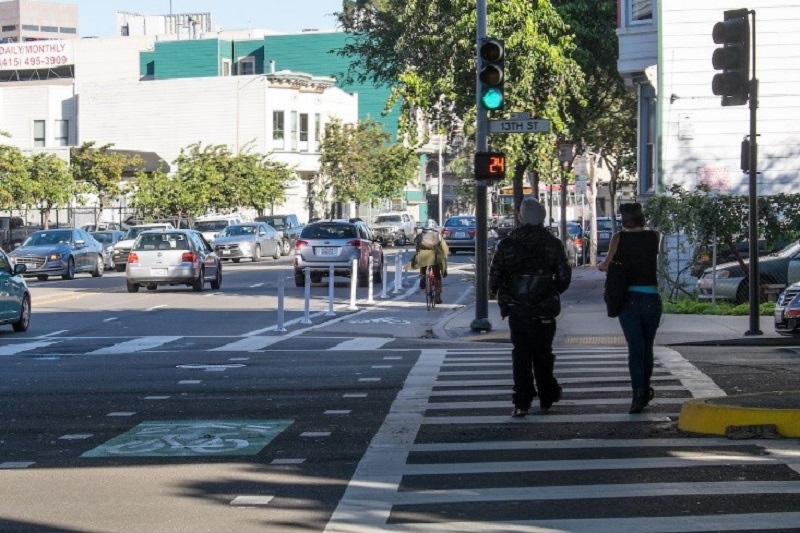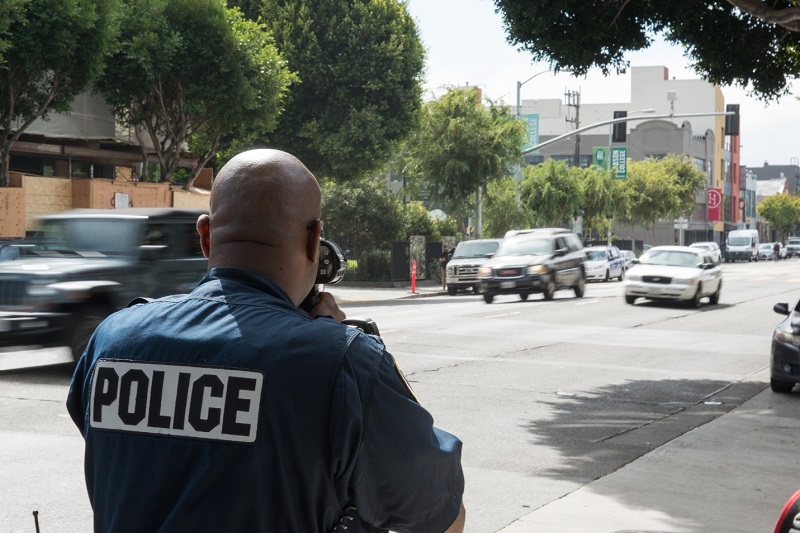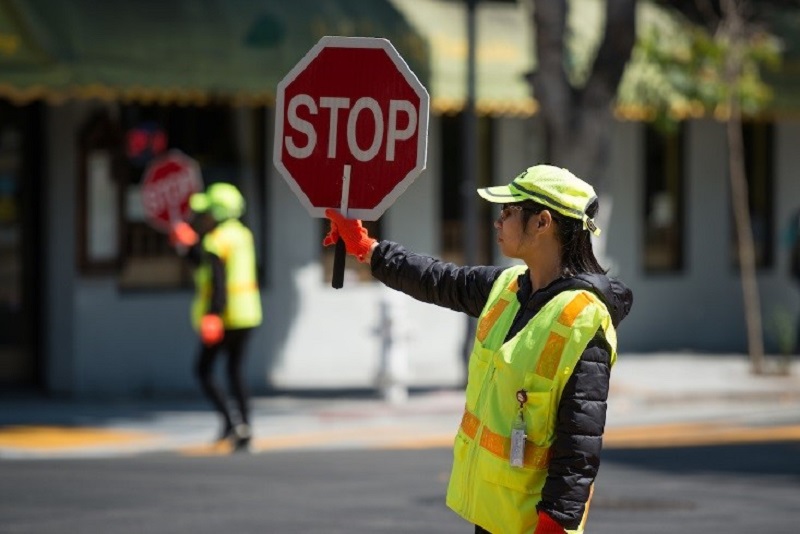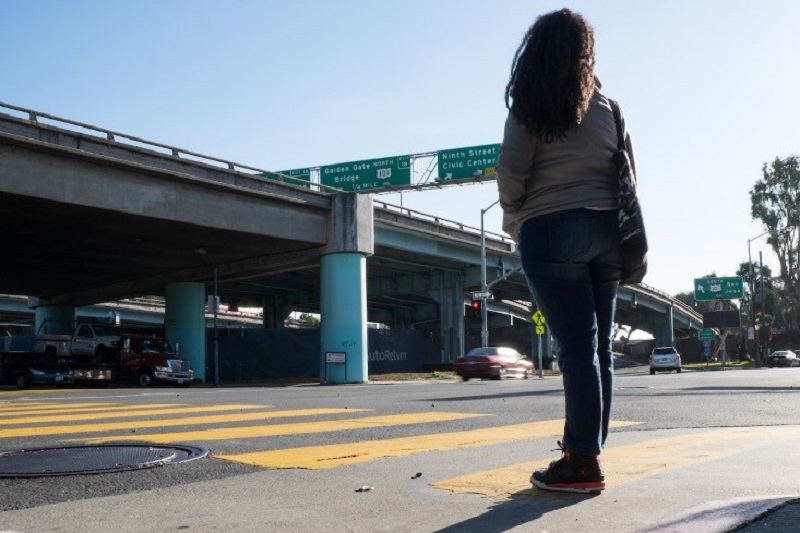Our 2016-2017 Annual Report, Streets for All, highlights our collection of recent achievements and goals. The stories captured in the Fiscal Year 2016-2017 SFMTA Annual Report demonstrate the role transportation plays in living out those values—chief among them the city’s Transit First Policy. Throughout the year, we will be featuring excerpts from Streets for All on Moving SF to give our readers better insight on what we have achieved thus far, and what we look forward to bringing to the people of San Francisco.

Inviting Streets (page 23 of Streets for All)
When San Francisco approved Vision Zero in 2014, we spoke with one voice to say that traffic deaths are unacceptable. We said that as a city, we would strive to make these preventable fatalities a thing of the past. This effort continues.
Led by the San Francisco Police Department, the Department of Public Health and the SFMTA, the city pursues its goal of zero fatalities by building better and safer streets, educating the public about traffic safety, enforcing traffic laws, and adopting policy changes that save lives. While we believe we are making progress, we still have far to go.

Every year, some 30 people lose their lives and over 200 more are seriously injured while traveling on San Francisco streets. Data from recent years reveal that people who bike or walk account for more than half of traffic deaths in San Francisco. Groups who have historically been discriminated against and have not had a seat at the table bear the heaviest burden.
Higher rates of pedestrian injuries and fatalities happen in non-English speaking communities with high densities of seniors, people with disabilities or low-income households who rely on walking and public transit to get around. This highlights how the prevalence of traffic crashes in San Francisco is not only a health crisis—it’s a social justice issue.

In response, the SFMTA has taken a data-driven approach to identify road dangers, applying targeted solutions to the city’s high-injury network—the 12 percent of city streets that account for 70 percent of severe and fatal traffic injuries. In fiscal 2017, our agency worked hard to show that we value the lives of the people who live, work and play in our city. With every road safety campaign we launched, every school crossing guard we deployed, every crosswalk upgrade and infrastructure improvement we added to the bicycle and pedestrian environment, the SFMTA affirmed its commitment to achieving zero traffic deaths in San Francisco. Simply put, protecting the public is the primary role of government. And there is more work to do.

Three New Parking-Protected Bike Lanes
As part of Vision Zero and the city’s efforts to make biking safer in San Francisco, the SFMTA is working to install protected bike lanes as quickly as possible. Spurred by Mayor Ed Lee’s Executive Directive on Bicycle and Pedestrian Safety issued August 2016, our agency undertook three parking-protected bike lane projects. Now infrastructure separates cars from bikes and pedestrians on both 7th and 8th streets between Market and Folsom in SoMa. We also installed a parking-protected eastbound bike lane on 13th and Division Street from Harrison to Bryant. And to create a more comfortable barrier between curbside bike lanes and vehicle traffic, we constructed concrete dividers along Division between 10th and 11th streets.

A Safer Golden Gate Park
As called for in Mayor Lee’s Executive Directive, the SFMTA teamed up with the Mayor’s Office and the San Francisco Recreation and Park Department to reduce unsafe speeding in Golden Gate Park. You’ll now find 10 new speed humps on John F. Kennedy Drive—a park road with historically high numbers of severe and fatal traffic injuries. The humps are working. On that portion of JFK Drive, data show that prevailing speeds have been reduced by 19 percent, down from 32 mph to 26 mph. This is encouraging news. Studies reveal that if you hit someone while driving 30 mph in a 25 mph zone, you’re almost twice as likely to kill them. By lowering car speeds in Golden Gate Park we’re making our landmark park more wonderful. Additional work to eliminate crashes here continues with our Golden Gate Park Traffic Safety Project.
Here are some videos we shot to commemorate these safety milestones.